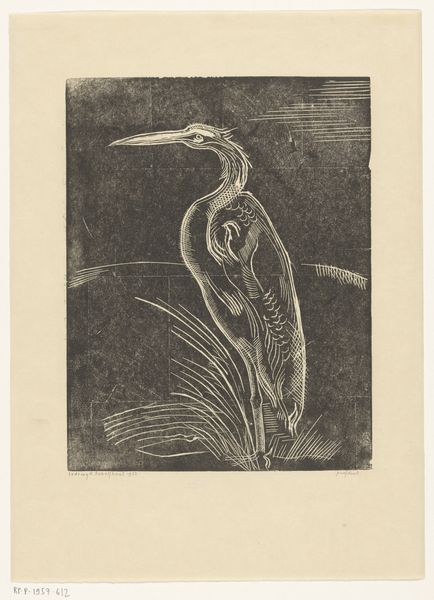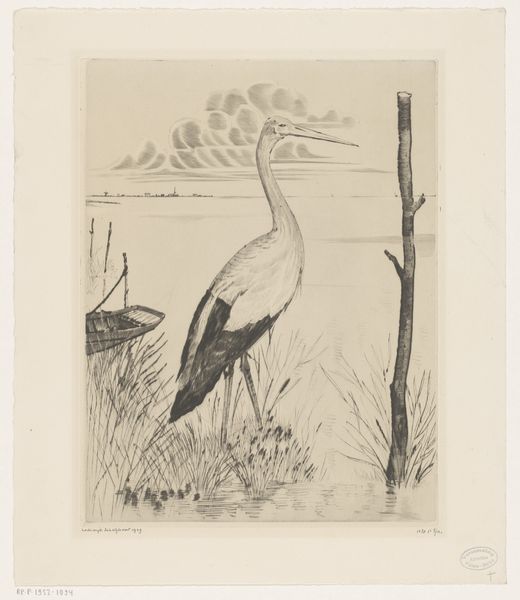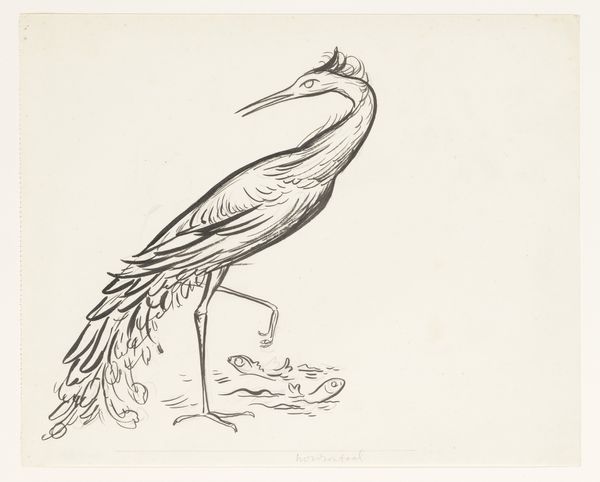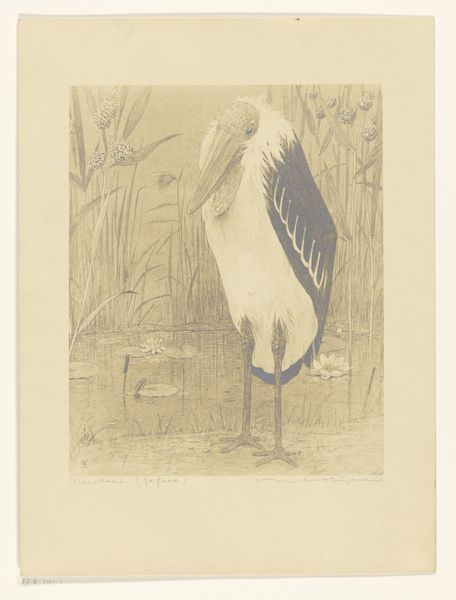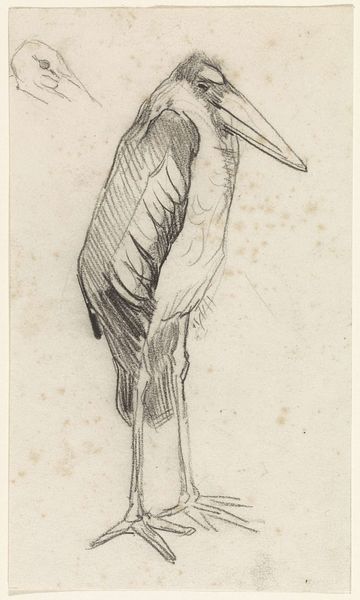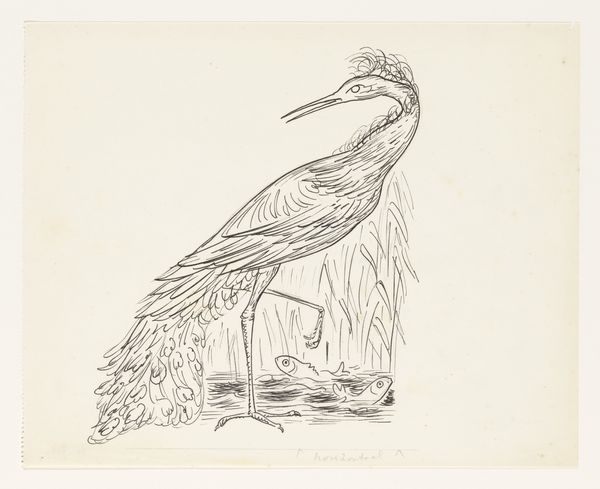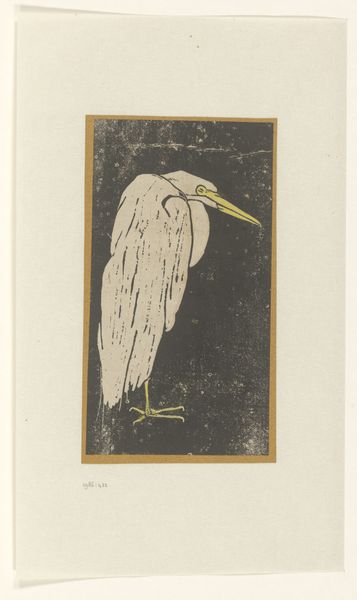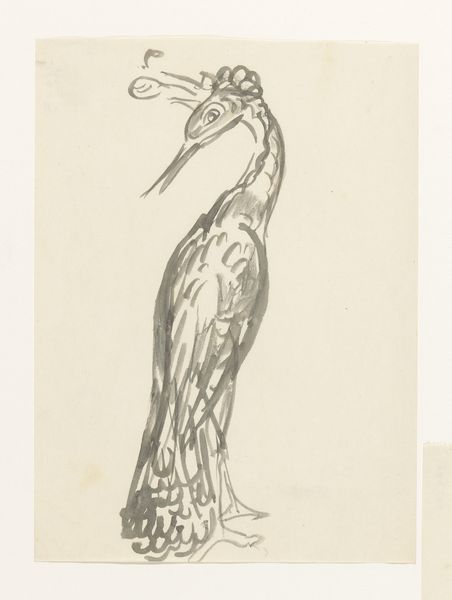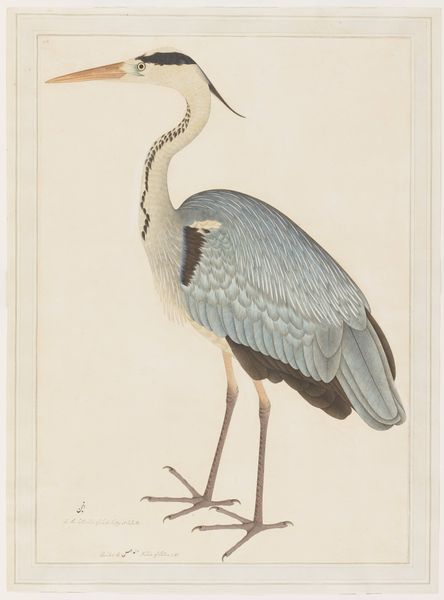
Dimensions: height 430 mm, width 268 mm
Copyright: Rijks Museum: Open Domain
Editor: So, this is "Reiger" by Frederika Henriëtte Broeksmit, dated between 1885 and 1931. It’s a pencil drawing, and there’s something delicate yet strong in the way the heron’s neck curves. How would you interpret the use of material here, considering its social context? Curator: Considering it is a pencil drawing of a heron, the focus isn’t solely on representing the bird. Instead, what social and material conditions allowed Broeksmit to produce it? We need to look at the means of production. What pencils were available at this time? What kind of paper? Were these materials readily available to women artists? Editor: That's a different angle than I considered! So, thinking about it… pencil drawings are often considered studies or preliminary sketches. Does that affect the value or perception of the piece, particularly regarding Broeksmit's labor? Curator: Precisely! Pencil wasn’t just a tool; it’s also tied to artistic training, academic exercises. Is Broeksmit engaging in this tradition, subverting it, or using the accessibility of pencil and paper to create art outside of conventional boundaries and labor? This challenges notions of high art. Editor: It's interesting to consider that this could be a conscious choice related to accessibility and maybe even a rejection of more "prestigious" materials. Was there a market for such drawings then, or was this a personal exploration with the medium? Curator: The market question opens another door! The act of Broeksmit choosing these specific, accessible, almost quotidian, materials prompts an examination of both artistic value and audience. It also makes us wonder what class dynamics allowed one access to these tools. Did the artist intend to be paid? Or just hone her craft and passion? It demands that we reconsider established hierarchies of art versus craft, fine art versus labor. Editor: I see what you mean! Focusing on the "how" and "why" it was made really broadens the story of this artwork beyond just the image itself. Curator: Exactly! The value of the artwork now stems not only from aesthetics but also from our ability to learn and question the dynamics that brought the work into existence.
Comments
No comments
Be the first to comment and join the conversation on the ultimate creative platform.
